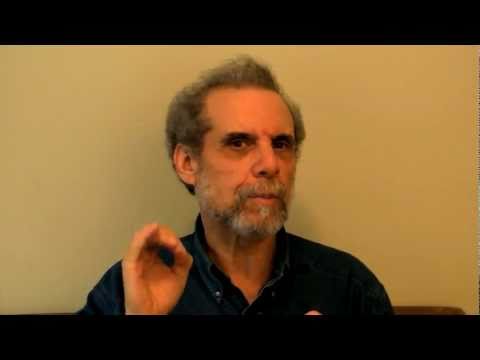[From Chad Green (2011.12.07.12:36 EST)]
Boris, who said that we needed to operate within a top-down, bottom-up paradigm to begin with?
If you want to understand how a neuron "thinks," why not try a first-person approach to the problem? Isn't that how a good detective operates?
Try to put yourself in its position. For example, would a neuron naturally orient itself from a top-down or bottom-up perspective like we humans typically do to make sense of our external environment? Of course not. If I were in a neuron's shoes, if you will, I would orient myself radially in the form a radial (and/or spherical) function: Radial function - Wikipedia.
To imagine this perspective, try to think only in terms of a top-up and bottom-down perspective. For example, if you apply this perspective in the context of HPCT, as I have, you will naturally want to extend the levels above 11 and below 1 at the same time.
But perhaps a more important question is this, what is the potential gap that a neuron would want to close from this perspective? What about the gaps beyond the neuronal cell structure (neuroglia)? Which gaps are more important?
These are questions of limited utility, admittedly. What interests me most at this point in time is the following:
Does PCT help to explain the 3-step process for creativity as described below by psychologist Daniel Goleman (Emotional Intelligence, 1995):
Daniel Goleman on the "AHA Moment"
Cheers,
Chad
PS What happened to the use of time signatures on this list?!
Chad Green, PMP
Program Analyst
Loudoun County Public Schools
21000 Education Court
Ashburn, VA 20148
Voice: 571-252-1486
Fax: 571-252-1633
boris_upc <boris.hartman@MASICOM.NET> 12/7/2011 10:34 AM >>>
Hi Rick,
again very interesting.
Rick :
Well, Bill is talking about _building_ the hierarchy and he calls the
building process (which I think is reorganization) "top-down".
actually don't know what he means by that. I was talking not about how
the hierarchy is built but how it works and it seems to have a top
down component (references from the top specifying the perceptions
that should come from the bottom) and a bottom up component
(perceptions of greater complexity are computed as you go up the
hierarchy).
Boris
Well I think whether we have in mind "top-down" hierarchy or "bottom-up"
hierarchy
being "built" or being in "work", is the same when the reference signal is
in question.
I even think that it doesn't matter whether we think of "buliding" or
"working" hierarchy
in "phylogenetic" (evolutionary) or "ontogenetic" sense as Maturana pointed
out.
The problem I see is that you started with "esential" or "intrinsic"
references (whatever) as the starting point and you say that is written in
B:CP. I have troubles with your language, but I don't beleive that troubles
could be to such an extent. But maybe I'm wrong.
Rick earlier :
When you get your copy of B:CP you will see that an important assumption of
the theory is that organisms are born with a set of "intrinsic references".
These references are inherited and basically unchangeable. Intrinsic
references are probably mainly specifications for the states of
physiological variables -- glucose concentrations, core temperature, etc
etc -- but there may be intrinsic references for more complex perceptual
variables like "love" or "society of others".
Boris :
What confused me, was that you wrote "intrinsic references" (Bill used as
far as I know term "intrinsic variables") what by my oppinion (and Bill's)
have the same meaning as Ashby's "essential variables".
But by your new interpretation, as I see it, is that the meaning of
"builiding", "developing" or "working" control hierarchy is drastically
changed. So if I try to follow references from the initial point ("intrinsic
references") through the hierarchy down-up, what means coming from
"intrinsic references" up-ward, then we get the "bottom-up" hierarchy what
means that references from lower level component of hierarchy are sent to
higher level component of hierarchy.
from the view point you started I see it as a logical assumption . But I
think that is not what is described in B:CP. For me it looks like a new
version of PCT. It's true that everything is perception, but on the whole
what you wrote, I don't see it as "exact" hierachical model of PCT.
Something doesn't fit. The question is what ? Maybe the main question is,
what are "intrinsic references" ?
Best,
Boris
···
----- Original Message -----
From: "Richard Marken" <rsmarken@GMAIL.COM>
To: <CSGNET@LISTSERV.ILLINOIS.EDU>
Sent: Wednesday, December 07, 2011 1:46 AM
Subject: Re: How does PCT explain where our basic characteristics come from?
[From Rick Marken (2011.12.06.1650)]
On Tue, Dec 6, 2011 at 10:17 AM, boris_upc <boris.hartman@masicom.net> > wrote:
RM: I'm referring to the hierarchical model of perceptual control
described in
B:CP and partially modeled as a dynamic spreadsheet at
http://www.mindreadings.com/demos.htm as the "Spreadsheet Hierarchy
Demo". I
think it's both a "bottom up" and "top down" hierarchy at the same time.
But
whatever you call it, it's the hierarchical model of perceptual control.
BH: I'm a little confused. Maybe I didn't understand right B:CP or Bill's
statement
Bill P :
The circuitry is built mostly during the lifetime of the organism,
and the building is guided from the top down, not the bottom up. Don
Campbell called this "top-down determinism." Which brings me to Jill
Taylor and her TED talk.
Boris :
Is there something that I'm missing ?
Well, Bill is talking about _building_ the hierarchy and he calls the
building process (which I think is reorganization) "top-down". I
actually don't know what he means by that. I was talking not about how
the hierarchy is built but how it works and it seems to have a top
down component (references from the top specifying the perceptions
that should come from the bottom) and a bottom up component
(perceptions of greater complexity are computed as you go up the
hierarchy).
Best
Rick
--
Richard S. Marken PhD
rsmarken@gmail.com
www.mindreadings.com
